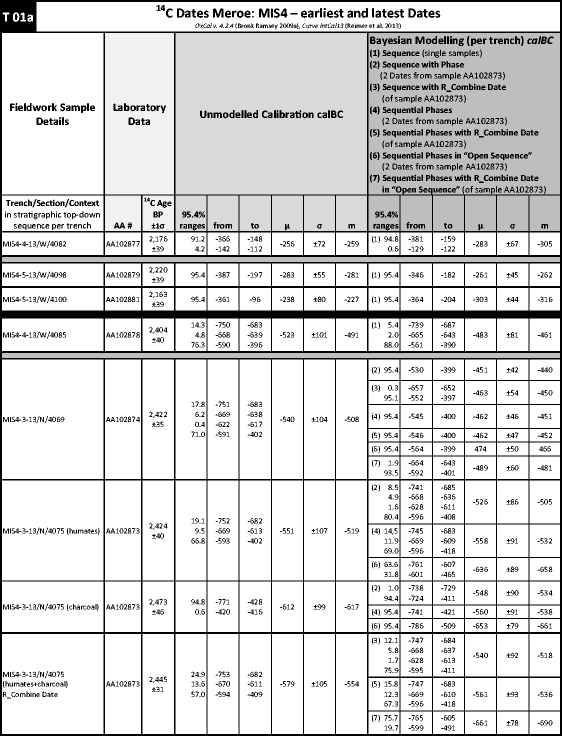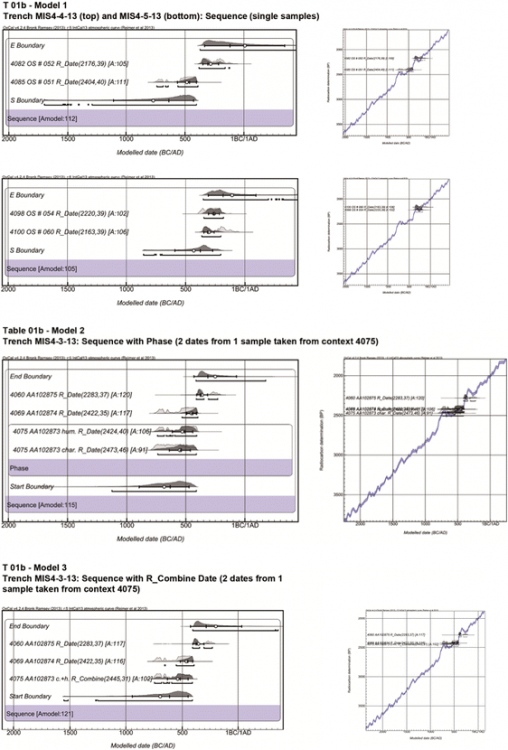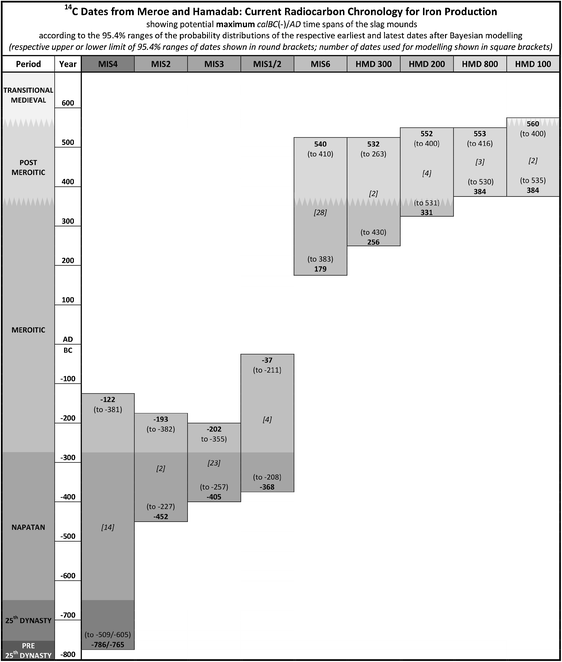Leaderboard
Popular Content
Showing content with the highest reputation on 2020-09-24 in all areas
-
If the archaeological record doesn't support this, then what's the relevance of Herodotus passage with regard to Lower Nubia? The description is entirely in line with the populations to the South and West of Kush proper. Not with the Lower Nubians to their north. Lower Nubians were thoroughly Egyptianized by the New Kingdom (a process that started in the Middle Kingdom), and was preserved during the "Nubian Dark Ages", and continued strongly into the Napatan Period as well. They were an intermediate/mixed population living in Egyptian style towns for the period being discussed here. Applying Herodotus description to these people is far beyond reasonable. In addition to this, there's another textual source that escapes me for now that states that "Ethiopia" supplied the Achaemenids with a certain number of slaves each year. Knowing this, it becomes obvious that the "Ethiopians" in Persians armies may have come from anywhere in or around Kush. They presumably weren't "captured" by Persians in Lower Nubia, but captured by Kushites somewhere in Upper Nubia or beyond, and traded via Lower Nubia, by Kushites to the Persians in exchange for luxery items, political favor or other things. Indeed, it was a quality paper, but it is currently outdated... Written in 2003, published 2004... A lot has happened since then. Did you actually read it well? Because the assertion that Kushite iron smelting doesn't predate the 5th century, or even the Meroitic Period, based on the finds from Arminna West, makes no sense whatsoever. Arminna West wasn't even occupied by Kushites until the Meroitic Period. Looking for evidence of Napatan Period iron smelting in a site that wasn't even occupied during the Napatan Period, in a region that was never a producer of iron, is, sorry to say, ridiculous... Again, what's the relevance of this table from a site that was not even occupied during the Napatan Period? It's not even close to Meroë, where most of the iron was actually produced. Lower Nubia doesn't even have wood resources for iron production... : I'm not saying anything about the "origins of" (better said, "innovations in") Meroitic ironmaking or smithing techniques. I'm talking about the antiquity of Kushite iron smelting... It predates the Meroitic Period by centuries. We've already known this for years... I said "well established" by the 6th century, not 8th century BC... But it was probably already established by the 8th century BC. Yes, that's the working conclusion from the 97 radiocarbon dates providing us with the current chronology, from samples that didn't even reach the lowest levels. These aren't small mounds. They're pretty huge (MIS4 is 60 meters diameter, 5 meters high). So big they couldn't even reach the lowest layers at the core. They went to a depth of 2.05 meters in a mound that's 5 meters high. These aren't experimental smelts. These are large scale iron production activities that started depositing large quantities of slag at MIS4 latest in the fifth century BC and probably earlier. The chronology of MIS4 is based on 14 different radiocarbon dates, some of which are clearly clustering on 500 BC or earlier... Again: "The early distributions should not be disregarded, both because of the horizontal stratigraphy described above, and because of the significant depth of metallurgical deposits underlying the earliest dates." Which means that the quantities produced before the earliest acquired dates were already substantial! So what are you arguing now? That we shouldn't even consider Kushites an Iron-Age civilization, because of your claims based on outdated literature? Yes, Napatans were probably mostly using bronze and can be considered Bronze-Age, but even your own study you linked specifically remarked how heavily corroded those Meroitic artefacts from Arminna were, and that some of them retained little metal... How much worse for older examples? Metal was systematically recycled in the Nile Valley. It's a miracle we still have anything left today. Yet there have still been hundreds of iron artifacts excavated from the Meroitic Period. Most of them nothing more than glorified lumps of iron oxide. We only learn something useful in terms of quantities of iron produced from the slag mounds themselves, which are literally some of the largest in Africa. This production more than likely started before 500 BC, probably in the 8th century BC (and it's firmly Napatan or older in origin). Prior to that they were using bronze. No gazelle horn weapons have been identified so far, but dozens and dozens of bronze weapons are known from the earlier archaeological record. What relevance this has for 0AD, or the early history of iron production at Meroë, I don't know... In fact, they were even using stone arrow heads, in addition to bronze and iron. So should we consider them Stone-Age now? What do you mean "plausible". Of course there were differences... But this is a 0AD-problem, not a Kushites-problem. What that has to do with the history of iron smelting around Meroë is of little relevance... Especially if you're making an argument that they should use sharpened gazelle horns instead of you know, bronze like they've been using for well over a millennium before the starting date of 0AD. The only people for who Herodotus' description is relevant is for the early Noba and other peripheral populations to the West and South. What does that have to do with Kushites and their iron smelting specifically? Kushites have both bronze and iron weapons in-game, as they had in real life, throughout the period relevant for 0AD.2 points
-
The issue with radiocarbon dating are the plateaux and the period of interest here clearly falls in one of the worst plateau ever known. The variability is clearly visible in the table for the calibration, they analyzed each sample three times (this is what we usually do in geochemistry). However, from the two samples 4017 and 4052, even by accounting the variability they could be confident for a second half of the 7th century BC at least. Edit: An interesting intro on the topic of iron ore in Meroe: https://www.tandfonline.com/doi/pdf/10.1080/0067270X.2018.1515922 Well, bones javelins are common in Danemark and in the British Isles during the iron age, so why not. Arrows are projectiles, consumables.1 point
-
It's hard to believe some logic in 0ad code is flooding gigabytes in the span of a few minutes, that said it's not impossible. There could be also unrelated causes that get exacerbated with the additional traffic. Another one, stuck units, one dc (Ivaylo Uzunov) cc @user1 commands.txt1 point
-
More examples of knives: Great Britain: https://www.britishmuseum.org/collection/object/H_1958-0704-2 https://www.britishmuseum.org/collection/object/H_1975-0701-2 France: https://www.britishmuseum.org/collection/object/H_ML-1348 https://www.britishmuseum.org/collection/object/H_ML-1595 https://www.britishmuseum.org/collection/object/H_ML-2514 Italy: https://www.metmuseum.org/art/collection/search/247082 https://www.britishmuseum.org/collection/object/G_1982-0617-63 Greece: https://www.britishmuseum.org/collection/object/G_1919-1119-47 https://www.britishmuseum.org/collection/object/G_1920-1122-2 https://www.britishmuseum.org/collection/object/G_1975-0730-20 Syria: https://www.britishmuseum.org/collection/object/W_1913-1108-32 Iran: https://www.metmuseum.org/art/collection/search/325721 point
-
I discussed this in the opening post of this thread, and several times since. Obviously, the descriptions are referring to primitive peripheral peoples like the early Noba to the west of the Nile. Kushites exported slaves, among other things, to the Persians (as well as receiving Persian luxery goods, attested in some of the recorded Kushite grave goods). These slaves were raided from the Kushite periphery, and may well have supplied the Persians with "Ethiopian" fighters, which is where the primitive description comes from. Not from Kush proper. I already repeatedly pointed out that the Kushites were using iron since at least c. 949 B.C.: https://www.livescience.com/62419-ancient-horse-burial-tombos.html And we know that they were already using bronze weapons since the 2nd millennium BC, which Herodotus doesn't mention either... I don't have access to the paper because of a paywall, but if the conclusion is really "dates “Early Meroitic” iron artefacts to 3rd C BC onwards", then it's either of extremely shoddy quality or just hopelessly outdated, or maybe the paper is merely commenting on the artefacts from "Arminna and Toshka West in Lower Nubia", which is the focus of the paper. These sites aren't even close to the main centres of iron production in Upper Nubia far to the south around Meroë. Let me share the relatively recent results from a proper, quality archaeological investigation into the antiquity of iron production at Meroë and Hamadab: "A New Radiocarbon Chronology for Ancient Iron Production in the Meroe Region of Sudan", by Jane Humphris & Thomas Scheibner, 2017: https://link.springer.com/article/10.1007/s10437-017-9267-x Iron production at Meroë may date to as early as the 8th century BC, or even earlier, perhaps even predating the 25th Dynasty... In any case, it was well established by the 6th century BC. It needs to be emphasized that these 97 radiocarbon dates were obtained from carefully selected charcoal samples embedded within the iron-slag itself, deliberately attempting to select against the possibility of old wood by subjecting the samples to detailed examination before dating... It should also be emphasized that the earliest dates aren't even from the earliest deposits! There was a "significant depth of metallurgical deposits underlying the earliest dates". These earlier deposits were difficult to reach because of the extraordinary size and depth of the deposit, the iron slag mound in question, reaching 60 meters in diameter and a height of 5 meters above ground level, making it unstable and unsafe to excavate to a depth of more than "2.05 m".. That paper shows how it's done... The relative scarcity of iron objects and weapons from early dates is easily explained by the heavy level of corrosion in surviving examples (most of it is just crumbling, unidentifiable lumps of heavily corroded iron), the practice of recycling (and systematic looting), and the fact that they usually weren't even buried with weapons of war to begin with...1 point
-
Herodotus on the “Ethiopians” in Xerxes' army at the Hellespont in 480 BC: Now it is unclear how far Persian influence extended and Herodotus is not always known as the most reliable author, nonetheless, the suggestion that the “Ethiopians above Egypt” didn't have iron weapons at the time (5th C BC) is fascinating, and consistent with the finds from an article discussed earlier: Brook Abdu, Robert Gordon “Iron artifacts from the land of Kush” Journal of Archaeological Science 31 (2004) 979–998 https://doi.org/10.1016/j.jas.2003.12.011 which dates “Early Meroitic” iron artefacts to 3rd C BC onwards.1 point
-
1 point
-
2 games, one dc'ed at start commands.txt commands.txt1 point
-
1 point
-
So there are evidences for spearmen, swordsmen, javelineers, light cavalry, heavy cavalry, slingers. The most common symbol for the Lusitanians is the lunula: https://en.wikipedia.org/wiki/Lusitanians#/media/File:Lúnula_lusitana_de_Chão_de_Lamas_(M.A.N._28589)_01.jpg1 point
-
You should try Delenda Est. It changes just about everything, so should give you delight in figuring your rankings.1 point
-
1 point
-
dc from ricsand and crash, it's unplayable lately :-( metadata.json commands.txt1 point
-
chrstgtr kristian and superposition dced metadata.json commands.txt1 point
-
The area near the Jhelum River can be pretty rocky and hilly. I hope that we can get the Map Resize patch committed so I can enbiggen the map (from the center instead of the bottom left corner) and have room to add some cliffs and rocky areas.1 point


.thumb.jpg.b21ca1d0c15fb56b42c39b25a0a40815.jpg)






